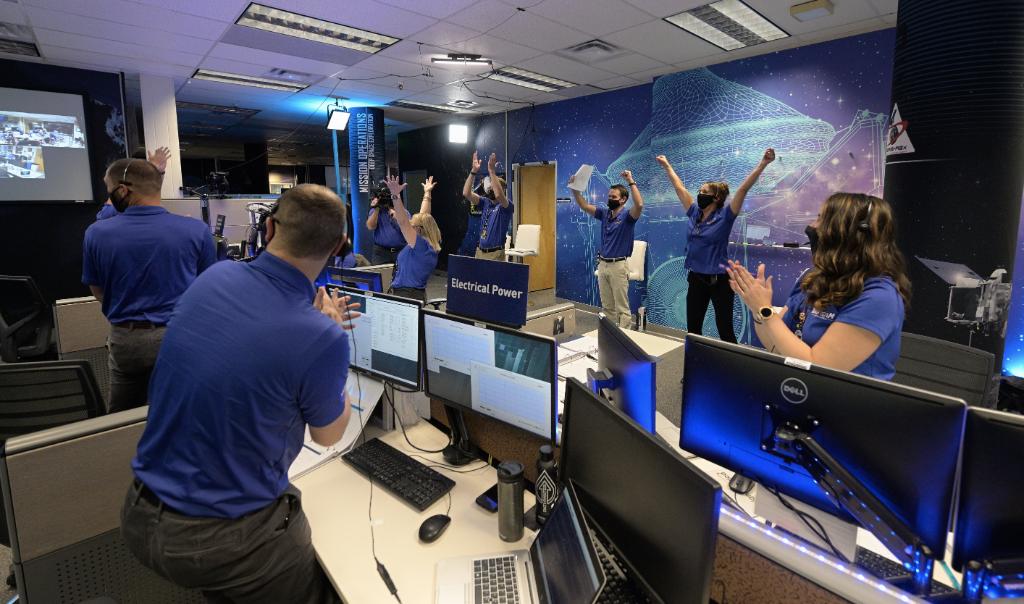Nasa's Osiris-Rex spaceprobe, launched four years ago, visibly succeeded in the night of October 20-21 in collecting the first American sample on an asteroid.
A new mission for NASA
Launched in September 2016 (cf. A and C No. 2512) and arrived in October-November 2018 near the near-Earth asteroid (101955) Bennu (525 m in diameter), the American Osiris-Rex (Origins-Spectral Interpretation-Resource Identification-Security-Regolith Explorer) spaceprobe made its American debut on October 20 at 9:53 p.m. UTC : touching the surface of the asteroid, 320 million kilometers away from the Earth, and taking regolith samples using a 3.2 m long mechanism called Tagsam (Touch-And-Go Sample Acquisition Mechanism).
This is a first for the U.S. space agency, which had collected 382 kg of lunar rocks during the Apollo missions between 1969 and 1972, and collected some ions from the solar wind and some particles from comet 81P/Wild during the Discovery program's Genesis and Stardust missions between 2001 and 2004.
Optimism shown
The October 20th operation appears to be successful and preliminary data (including images from the SamCam imager) indicate a contact of about 6 seconds, within the targeted area.
Particles are flying everywhere," said Dante Lauretta, principal investigator of the Osiris-Rex mission at the University of Arizona's Lunar and Planetary Laboratory in Tucson, as he watched the Touch And Go images. We really made a mess on the surface of this asteroid, but it's a good mess: it's the kind of mess we were hoping for”.
He added, "The sampling sequence went very well, and I think the chances of there being any material collected by the Tagsam have increased considerably”.
Back in three years
The goal was to collect until 60 g of regolith on the surface of the asteroids, which are to be returned to Earth in September 2023, in the Utah desert.
Until now, only the Japanese had managed to collect a few grams of dust or regolith on an asteroid during the Hayabusa 1 and 2 missions in November 2005 (Itokawa asteroid), and in February and July 2019. (Ryugu asteroid).
Hayabusa 2 samples are due to be recovered in December.

